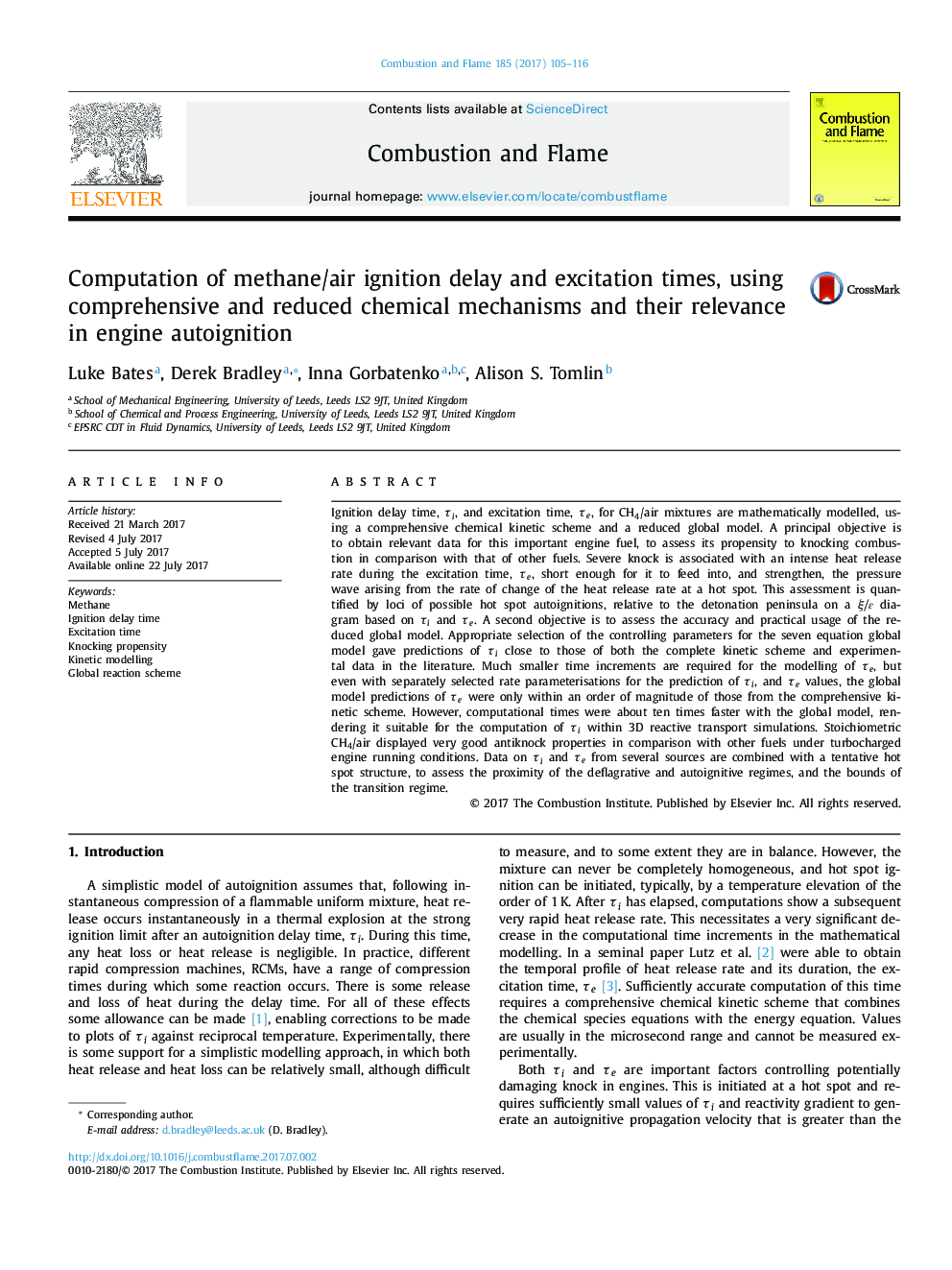| کد مقاله | کد نشریه | سال انتشار | مقاله انگلیسی | نسخه تمام متن |
|---|---|---|---|---|
| 6468055 | 1423552 | 2017 | 12 صفحه PDF | دانلود رایگان |
Ignition delay time, Ïi, and excitation time, Ïe, for CH4/air mixtures are mathematically modelled, using a comprehensive chemical kinetic scheme and a reduced global model. A principal objective is to obtain relevant data for this important engine fuel, to assess its propensity to knocking combustion in comparison with that of other fuels. Severe knock is associated with an intense heat release rate during the excitation time, Ïe, short enough for it to feed into, and strengthen, the pressure wave arising from the rate of change of the heat release rate at a hot spot. This assessment is quantified by loci of possible hot spot autoignitions, relative to the detonation peninsula on a ξ/É diagram based on Ïi and Ïe. A second objective is to assess the accuracy and practical usage of the reduced global model. Appropriate selection of the controlling parameters for the seven equation global model gave predictions of Ïi close to those of both the complete kinetic scheme and experimental data in the literature. Much smaller time increments are required for the modelling of Ïe, but even with separately selected rate parameterisations for the prediction of Ïi, and Ïe values, the global model predictions of Ïe were only within an order of magnitude of those from the comprehensive kinetic scheme. However, computational times were about ten times faster with the global model, rendering it suitable for the computation of Ïi within 3D reactive transport simulations. Stoichiometric CH4/air displayed very good antiknock properties in comparison with other fuels under turbocharged engine running conditions. Data on Ïi and Ïe from several sources are combined with a tentative hot spot structure, to assess the proximity of the deflagrative and autoignitive regimes, and the bounds of the transition regime.
Journal: Combustion and Flame - Volume 185, November 2017, Pages 105-116
